Pyocyanine
Synonym(s):5-Methyl-1(5H)-phenazinone;Pyocyanine;Sanasin;Sanazin
- CAS NO.:85-66-5
- Empirical Formula: C13H10N2O
- Molecular Weight: 210.23
- MDL number: MFCD01794662
- SAFETY DATA SHEET (SDS)
- Update Date: 2023-06-08 09:01:57
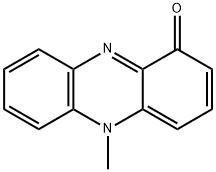
What is Pyocyanine?
Description
Pyocyanine (85-66-5), a redox-active phenazine produced by?P. aeruginosa?and other pathogens, is an electron receptor, which stimulates redox cycling in bacteria as well as in a variety of human cell lines. It enhances oxidative metabolism, which increases the formation of intracellular reactive oxygen species (ROS) via reduction of NADPH. Pyocyanine accelerates neutrophil apoptosis?in vitro. Pyocyanine production by?P. aeruginosa?suppresses the acute inflammatory response by pathogen-driven acceleration of neutrophil apoptosis and associated reduction of local inflammation.
The Uses of Pyocyanine
Pyocyanin is an antibiotic accelerator of neutrophil apoptosis.
The Uses of Pyocyanine
Pyocyanin has been used:
- To disable the ability of forkhead box A2 (FOXA2) to regulate goblet cell hyperplasia and metaplasia (GCHM) and mucin expression.
- To activate nuclear factor (erythroid-derived 2)-like 2 (NRF2) through the reactive oxygen species (ROS)-inducible epidermal growth factor receptor (EGFR)-phosphoinositide 3-kinase (PI3K) cellular signal transduction pathway and its downstream effectors.
- To stimulate Pseudomonas aeruginosa PAO1 cell line adhesion and invasion in human lung carcinoma A549 cells via reactive oxygen species (ROS) production.
What are the applications of Application
Pyocyanin is an antibiotic accelerator of neutrophil apoptosis
General Description
Pyocyanin is a secondary metabolite, which is produced by Pseudomonas aeruginosa.
Biochem/physiol Actions
Pyocyanin, a blue-green pigment belonging to phenazine pigments, is a redox-active phenazine. Pyocyanin is an electron receptor, which stimulates redox cycling in bacteria, liver cells, and human epithlial cell lines. Pyocyanin enhances the oxidative metabolism, which in turn increases the formation of intracellular reactive oxygen species (ROS) via reduction of NADPH. Pyocyanin also increases the release of IL-8 by airway epithelial cells both in vitro and in vivo. This involves signal transduction pathways that include oxidants, protein tyrosine kinases, and MAP kinases. IL-8 secretion by these cells is in synergy with inflammatory cytokines. Pyocyanin has been shown to accelerate neutrophil apoptosis in vitro, resulting in resolution of acute inflammation, which is beneficial for bacteria survival.
Enzyme inhibitor
This natural pigment (FW = 210.24 g/mol), which has an antifungal activity, is a secretory agent produced by Pseudomonas aeruginosa (formerly P. pyocyanea and Bacillus pyocyaneus). It is a blue solid that is soluble in chloroform and pyridine generates reactive oxygen species, such as superoxide and hydrogen peroxide. Pyocyanine is slightly soluble in cold water and the aqueous blue solution can be decolorized under alkaline conditions upon the addition of glucose or sodium hydrosulfite. Target(s): catalase; cytochrome P450 leukotriene B4 w-oxidation; and diamine oxidase.
Purification Methods
It crystallises from H2O as dark blue needles. The picrate has m 190o (dec). [Beilstein 23 H 395, 23 I 59, 23 II 234, 23/8 V 395.]
References
1) Rada and Leto (2013),?Pyocyanin effects on respiratory epithelium: relevance in Pseudomonas Aeruginosa airway infections; Trends Microbiol.,?21?73 2) Reszka?et al. (2012),?Inactivation of the potent Pseudomonas aeruginosa cytotoxin pyocyanin by airway peroxidases and nitrite; Am. J. Physiol. Lung Cell Mol. Physiol.,?302?L1044
Properties of Pyocyanine
| Melting point: | 133° |
| Boiling point: | 349.76°C (rough estimate) |
| Density | 1.1427 (rough estimate) |
| refractive index | 1.5300 (estimate) |
| storage temp. | -20°C |
| solubility | DMSO: soluble |
| pka | 2.42±0.20(Predicted) |
| form | solid |
| color | Dark blue |
| Stability: | Stable for 2 years from date of purchase as supplied. Solutions in DMSO may be stored at -20° for up to 1 week. |
Safety information for Pyocyanine
| Signal word | Warning |
| Pictogram(s) |
 Exclamation Mark Irritant GHS07 |
| GHS Hazard Statements |
H302:Acute toxicity,oral H319:Serious eye damage/eye irritation |
| Precautionary Statement Codes |
P264:Wash hands thoroughly after handling. P264:Wash skin thouroughly after handling. P270:Do not eat, drink or smoke when using this product. P280:Wear protective gloves/protective clothing/eye protection/face protection. P301+P312:IF SWALLOWED: call a POISON CENTER or doctor/physician IF you feel unwell. P305+P351+P338:IF IN EYES: Rinse cautiously with water for several minutes. Remove contact lenses, if present and easy to do. Continuerinsing. P337+P313:IF eye irritation persists: Get medical advice/attention. |
Computed Descriptors for Pyocyanine
New Products
Tert-butyl bis(2-chloroethyl)carbamate (S)-3-Aminobutanenitrile hydrochloride N-Boc-D-alaninol N-BOC-D/L-ALANINOL N-octanoyl benzotriazole 3,4-Dibenzyloxybenzaldehyde 4-Hydrazinobenzoic acid 1,1’-CARBONYLDIIMIDAZOLE R-2-BENZYLOXY PROPIONIC ACID 4-HYDROXY BENZYL ALCOHOL 1,1’-CARBONYLDI (1,2-4 TRIAZOLE) 3-NITRO-2-METHYL ANILINE (2-Hydroxyphenyl)acetonitrile 4-Bromopyrazole 5-BROMO-2CYANO PYRIDINE 5,6-Dimethoxyindanone 5-broMo-2-chloro-N-cyclopentylpyriMidin-4-aMine 2-(Cyanocyclohexyl)acetic acid 4-methoxy-3,5-dinitropyridine 2-aminopropyl benzoate hydrochloride 1-(4-(aminomethyl)benzyl)urea hydrochloride tert-butyl 4- (ureidomethyl)benzylcarbamate diethyl 2-(2-((tertbutoxycarbonyl)amino) ethyl)malonate Ethyl-2-chloro((4-methoxyphenyl)hydrazono)acetateRelated products of tetrahydrofuran
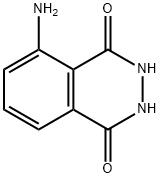

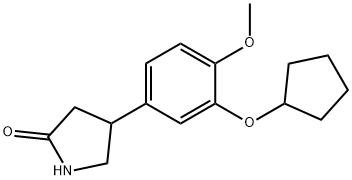
![(E)-3-[[[3-[2-(7-CHLORO-2-QUINOLINYL)ETHENYL]PHENYL]-[[(3-DIMETHYLAMINO)-3-OXOPROPYL]THIO]METHYL]THIO]-PROPANOIC ACID, SODIUM SALT](https://img.chemicalbook.in/CAS/GIF/115104-28-4.gif)
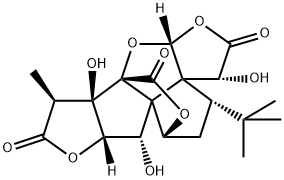
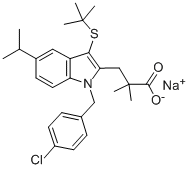
You may like
-
 Pyocyanin CAS 85-66-5View Details
Pyocyanin CAS 85-66-5View Details
85-66-5 -
 Pyocyanin, Ready Made Solution from Pseudomonas aeruginosa CAS 85-66-5View Details
Pyocyanin, Ready Made Solution from Pseudomonas aeruginosa CAS 85-66-5View Details
85-66-5 -
 55441-95-7 99%View Details
55441-95-7 99%View Details
55441-95-7 -
 N-Vinylformamide 99%View Details
N-Vinylformamide 99%View Details
13162-05-5 -
 Chloro Uracil 1820-81-1 99%View Details
Chloro Uracil 1820-81-1 99%View Details
1820-81-1 -
 2-ethyl-6-methyl-3-hydroxypyridine succinate 99%View Details
2-ethyl-6-methyl-3-hydroxypyridine succinate 99%View Details
127464-43-1 -
 2-ETHYLPYRIDINE 100-71-0 99%View Details
2-ETHYLPYRIDINE 100-71-0 99%View Details
100-71-0 -
 181228-33-1 (S)-Methyl 3-amino-2-((tert-butoxycarbonyl)amino)propanote Hydrochloride (DAP-OMe. HCl) 99%View Details
181228-33-1 (S)-Methyl 3-amino-2-((tert-butoxycarbonyl)amino)propanote Hydrochloride (DAP-OMe. HCl) 99%View Details
181228-33-1